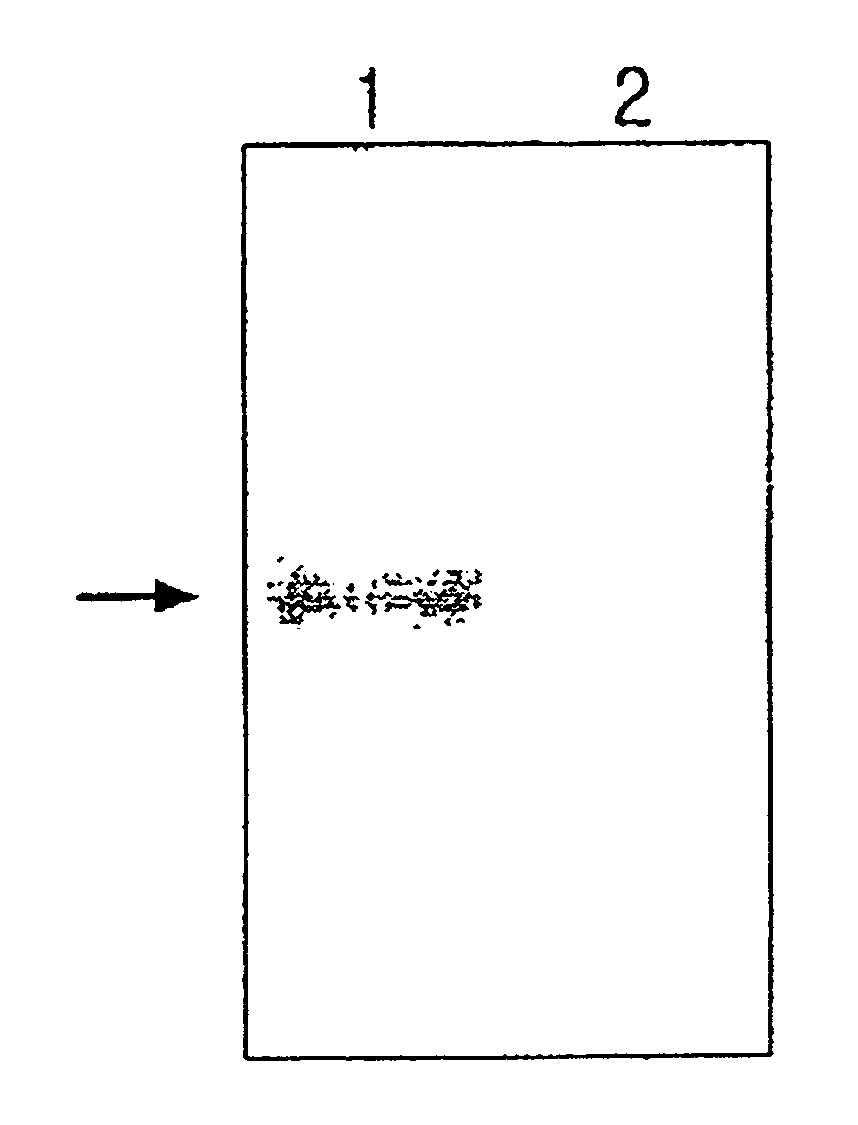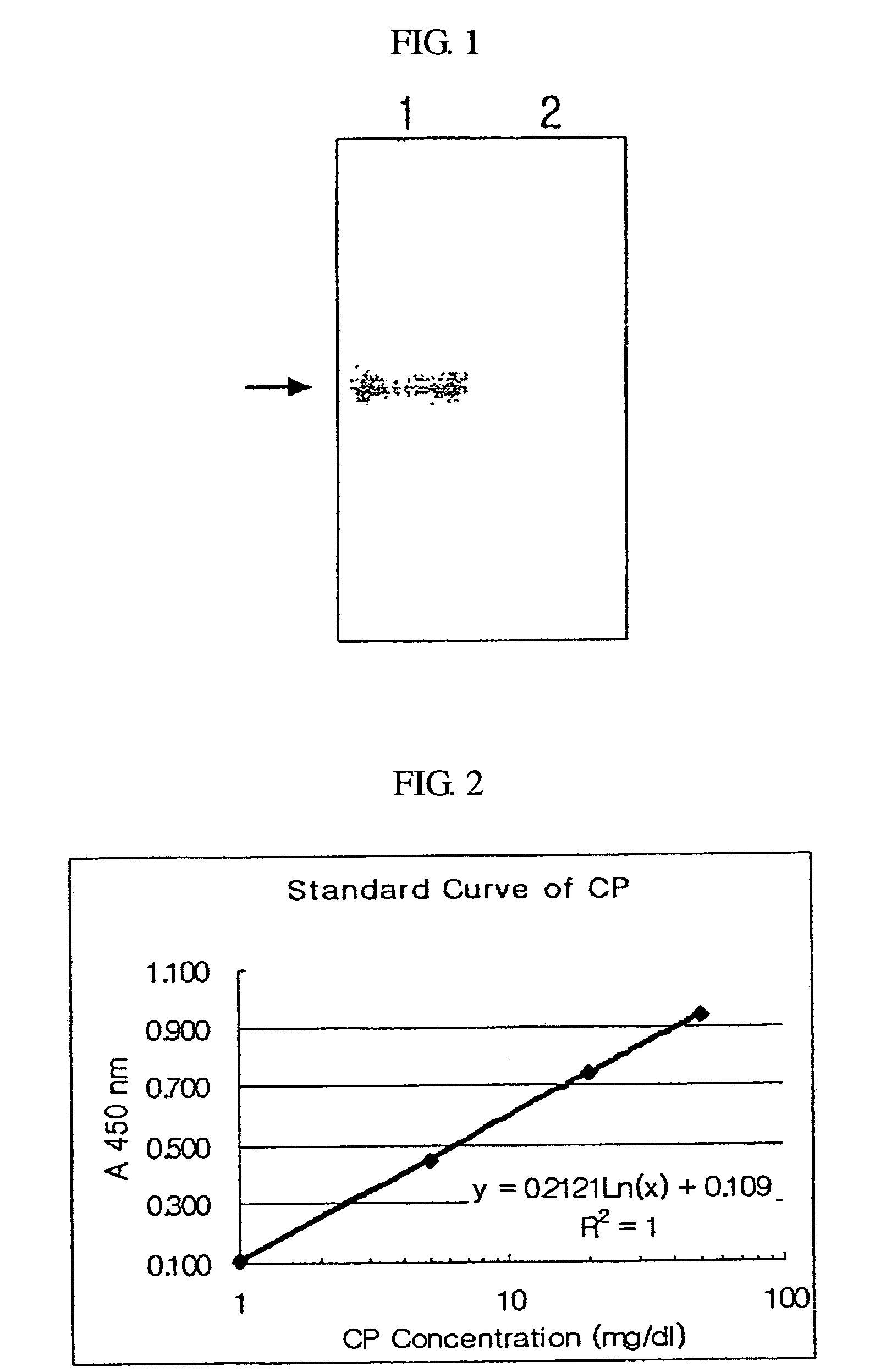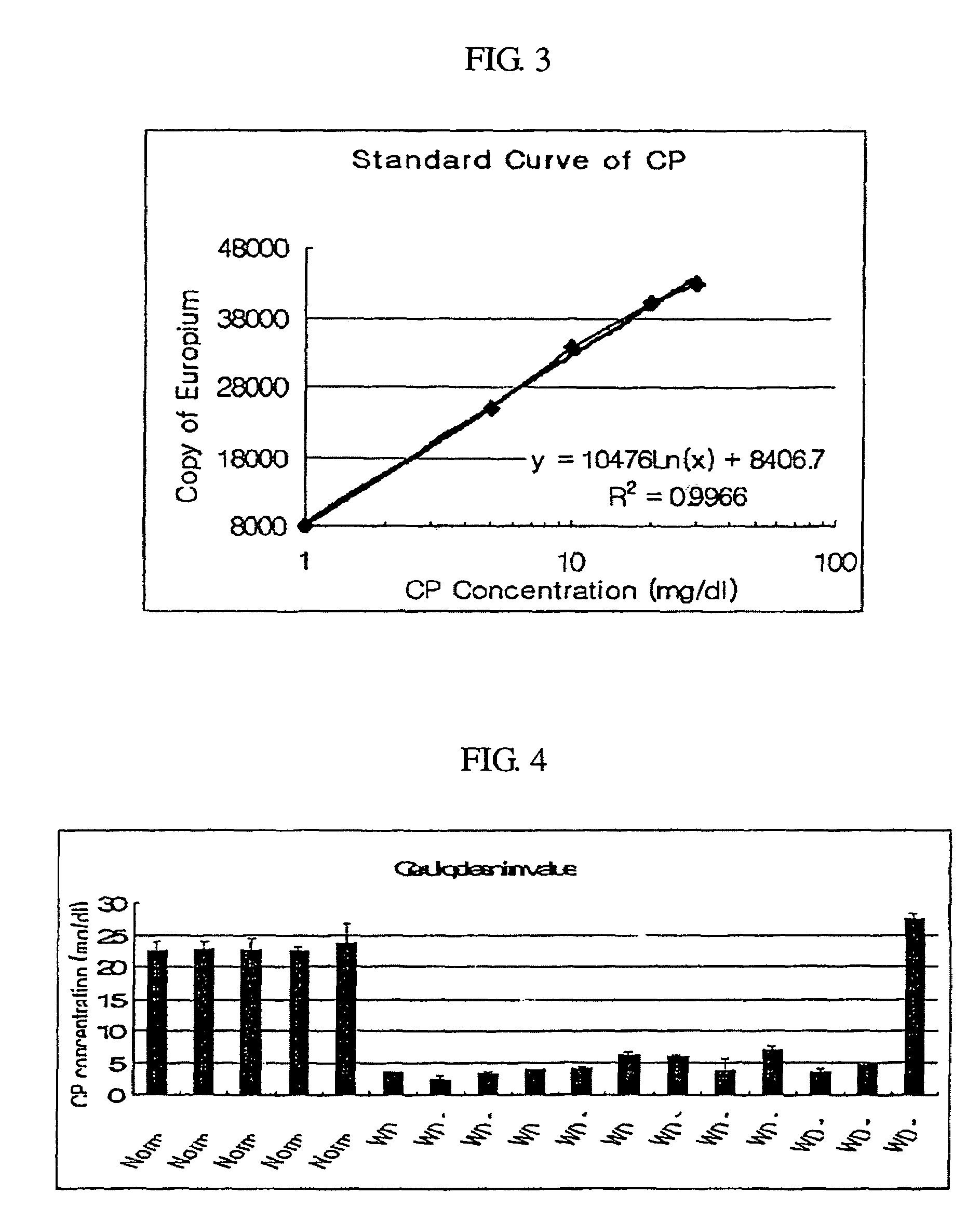Kit and method of screening wilson's disease
a technology of ceruloplasmin and kit, which is applied in the field of kit and method of screening wilson's disease, can solve the problems of large amount of blood, ineffective screening test, and many patients who suffer to die or live with severe neurologic sequela
- Summary
- Abstract
- Description
- Claims
- Application Information
AI Technical Summary
Problems solved by technology
Method used
Image
Examples
example 1
Manufacture of a Ceruloplasmin-Specific Polyclonal Antibody
[0051]In the example, purified human ceruloplasmin containing holoceruloplasmin was purchased from Sigma Co. in America. In order to produce an antigen specific polyclonal antibody, 400 μl of purified ceruloplasmin that had been dissolved in a phosphate-buffered saline at a concentration of 1 mg / ml was emulsified with the same amount of Freund's adjuvant purchased from BRL Co., and then the resultant was injected under the skin of a rabbit three times at 14-day intervals. Fourteen days after the last injection, 400 μl of purified ceruloplasmin that had been dissolved in a phosphate-buffered saline at the concentration of 1 mg / ml was injected to the rabbit through the ear vein, and seven days later, the blood of the rabbit was collected in accordance to a cardiac puncture method. The collected blood was left at room temperature for 30 minutes and 4° C. overnight to be completely condensed. Then, the condensed blood was centri...
example 2
Manufacture of Ceruloplasmin-Specific Monoclonal Antibody
[0052]In order to manufacture the monoclonal antibody of the present invention, 100 μl of purified ceruloplasmin having the concentration of 1 mg / ml was emulsified with the same amount of Freund's adjuvant, and the resultant was injected to the abdomen of a BALB / c mouse at an age of 6 to 8 weeks for three times at 14-day intervals. After confirming that ceruloplasmin antibodies were produced after the last injection, the mouse was immunized by injecting 100 μg of ceruloplasmin dissolved in a phosphate-buffered saline in two weeks. Three days later, spleen cells extracted from the mouse were mixed with Sp2 / 0-Ag 14 myeloma cells at the ratio of 10:1. The mixture was left in polyethyleneglycol 1500 solution for 3 minutes to proceed cell fusion, and centrifuged at 1,200 rpm for 8 minutes to obtain cell precipitates. Then, the precipitates were floated on HAT / RPMI-1640 medium containing 10% fetal calf serum to make 3.5×106 cells pe...
example 3
Confirmation of Ceruloplasmin Oxidase Activity Neutralization by Antibody
[0054]The mixture of 10 μg of purified ceruloplasmin and the same volume of each of different hybridoma supernatants was reacted together at 37° C. for 30 minutes, and electrophoresed using nonparametric polyacrylamide gel at 4° C. After the electrophoresis, the sodium acetate (pH 5.7) containing 1 mg / ml of p-phenylenediamine dyed over the gel at 37° C. for two hours to confirm the oxidase activity of ceruloplasmin, and was decolorized using 50% ethanol (FIG. 1).
[0055]As shown in FIG. 1, the purified ceruloplasmin oxidized p-phenylenediamin by self-oxidase activity and formed a purple band. On the other hand, in the mixed solution of ceruloplasmin with a ceruloplasmin-specific antibody did not form the purple band since the antibody neutralized the oxidase activity of ceruloplasmin. Therefore, the monoclonal antibody manufactured in Example 2 specifically binds to ceruloplasmin having an oxidase activity.
PUM
| Property | Measurement | Unit |
|---|---|---|
| concentration | aaaaa | aaaaa |
| temperature | aaaaa | aaaaa |
| pH | aaaaa | aaaaa |
Abstract
Description
Claims
Application Information
 Login to View More
Login to View More - R&D
- Intellectual Property
- Life Sciences
- Materials
- Tech Scout
- Unparalleled Data Quality
- Higher Quality Content
- 60% Fewer Hallucinations
Browse by: Latest US Patents, China's latest patents, Technical Efficacy Thesaurus, Application Domain, Technology Topic, Popular Technical Reports.
© 2025 PatSnap. All rights reserved.Legal|Privacy policy|Modern Slavery Act Transparency Statement|Sitemap|About US| Contact US: help@patsnap.com



